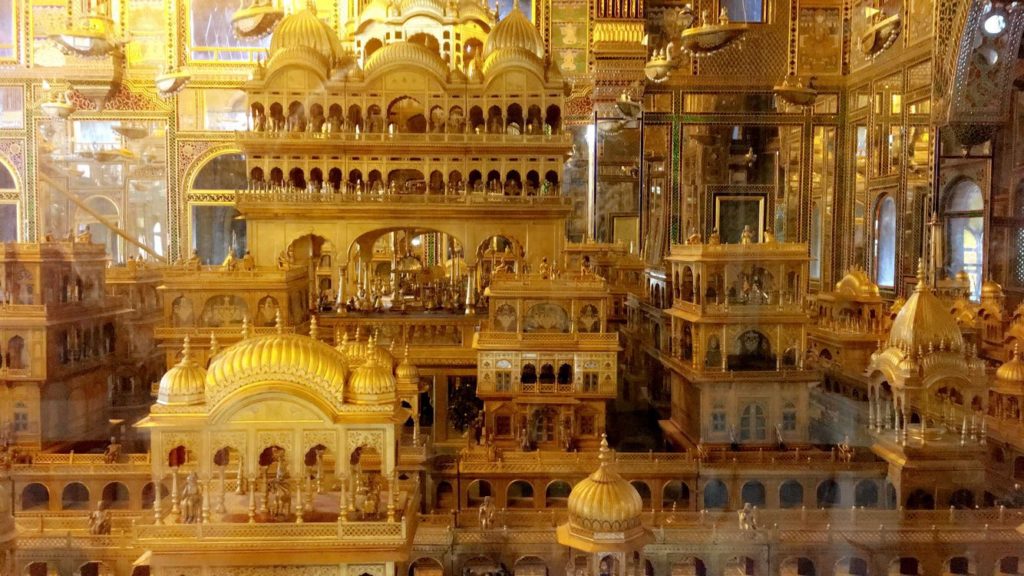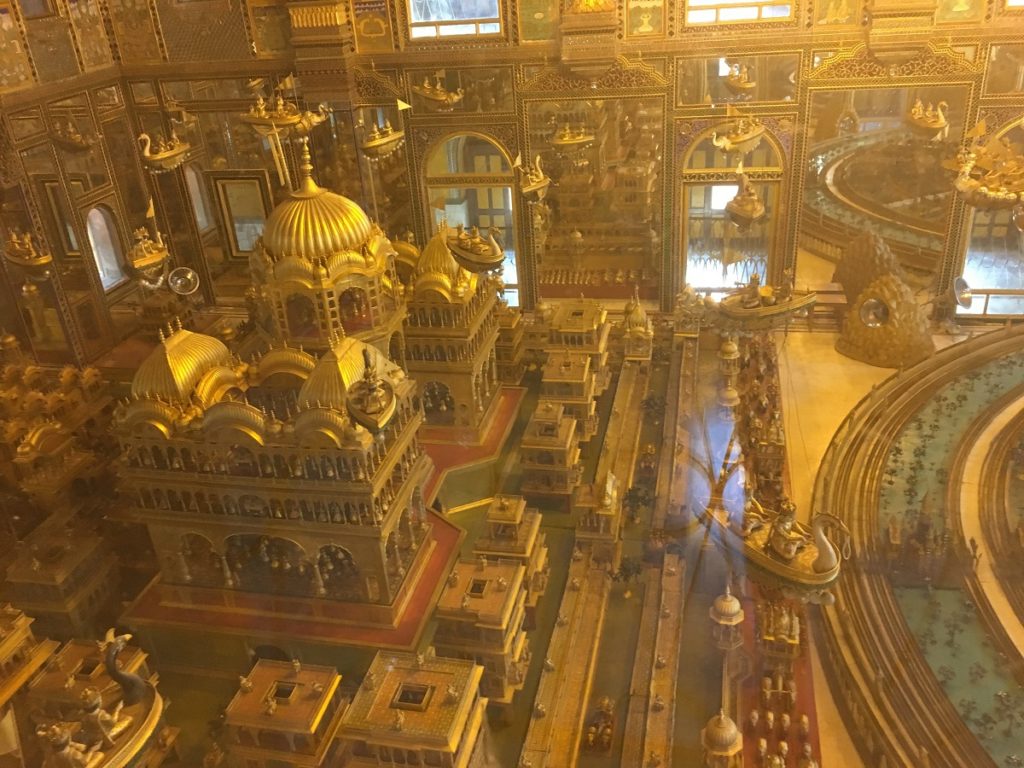A red temple in Ajmer and its city of gold
Giving an insight into the life of the first religious path maker of Jainism, this temple in Ajmer is an architectural marvel inside-out. With an ornate outer structure made of red-sand stone, it holds a city of gold within.
I whiz past it, but its intricate architecture makes me halt, turn around and gawk at it in amazement. A building with an exterior of red-sandstone carved ornately into huge arches and pillars, stands in the middle of a chaotic city and yet manages to stand out in its uniqueness. Intrigued, I decide to go in. It is a Jain temple, I learn on being asked to remove my shoes before entering. “Only the ‘museum’ of the temple is open to tourists and entry to the Sanctum Santorum is only for preachers of Jainism,” the man at the window tells me as he cuts a Rs 10 entry ticket.
Located in the city of Ajmer, in the northern Indian state of Rajasthan, the Siddhkoot Chaityalaya also known as the red temple was built towards the end of the 19th century and is dedicated to lord Rishabhdev, the first of the 24 tirthankars, spiritual path makers of the Jains.
Separated by a narrow passage and the religious practices of people, the main temple and the visitor’s gallery make for an elaborate depiction of the beliefs of Jainism. Although the main temple is not open for tourists, the visitor’s gallery or the ‘museum’, is what provides the unfamiliar a glimpse into the life of the first tirthankar.
A city of gold
A narrow staircase elevates one to the entrance of the city of gold, which is protected by a glass shield. A three dimensional imitation city made of wood and plated with gold, it depicts the story of the Holy and recites an epic saga.
Telling of the various stages from the life Lord Rishabdev this is the city of Ayodhya, the Lord’s birthplace. Kuber, a celestial lord laid it under the orders of lord Indra, six months prior to the Divine’s arrival in His mother’s womb.
Upon his birth, Indra with innumerable celestials comes in procession with heavenly elephants, horses, chariots to show his reverence to the great Lord while playing heavenly music. In joy, Indra also takes three rounds of the city before carrying the new born to Mt. Sumeru, the golden mountain on which the baby Tirthankar is seated for the great ablution ceremony.
This golden city showcases the journey of the lord from his birth to the time he attains manhood and ultimately Nirvana.
Renouncing worldly pleasures
Seated on his throne in a royal court, Lord Rishabhdev is enjoying a show by the celestial dancer Nilanjana when she dies performing. While Indra replaces the dancer with another one, Lord Rishabdev is able to spot the difference. It is after this incident, he wonders of the transient nature of the world and decides to renounce it.
Humans and celestials applaud His decision; take him in a celestial palanquin to city of Prayag, where he leaves all worldly things and becomes an ascetic. Under a banyan tree, Lord Rishabhdev disrobes Himself and plucks his hair by his own hands showing his extreme detachment to all worldly and bodily comforts. It is after this he goes into meditation to purify his soul and remains in the position for 1,000 years to attain supreme enlightenment and break the cycle of birth and re-birth.
Achieving this , the Lord leaves behind the five rules of conduct for the followers of Jainism, i.e. to be free from violence, falsehood, theft, chastity, and worldly attachments.
Practiced by followers of Jainism, these principles continue to govern the lifestyle of a dedicated preacher. A legacy of spirit and belief, it is only a speck of the story that is at display at the museum, while the underlying faith crosses all shields and boundaries.












